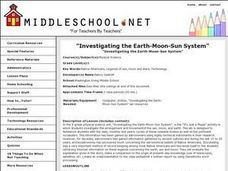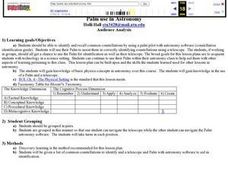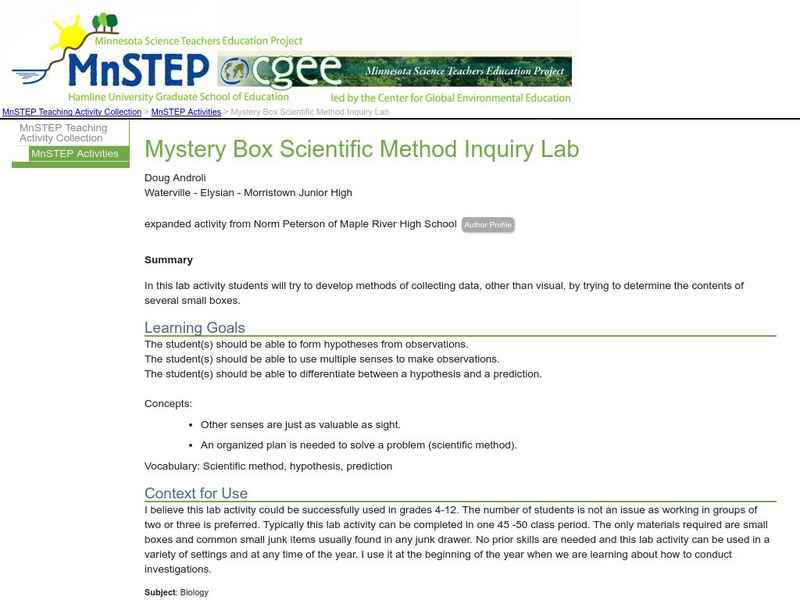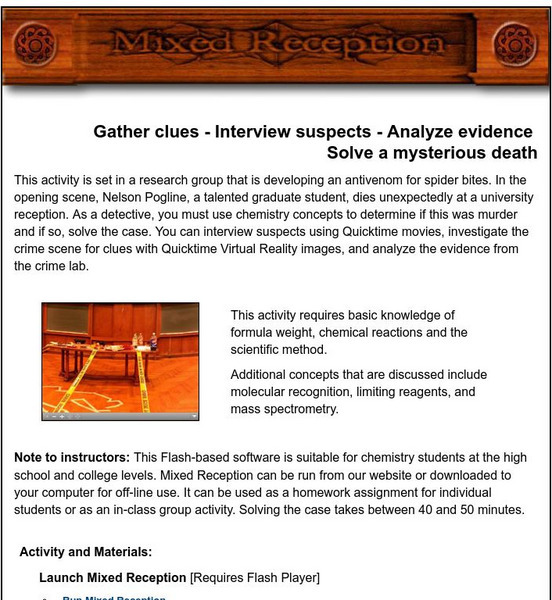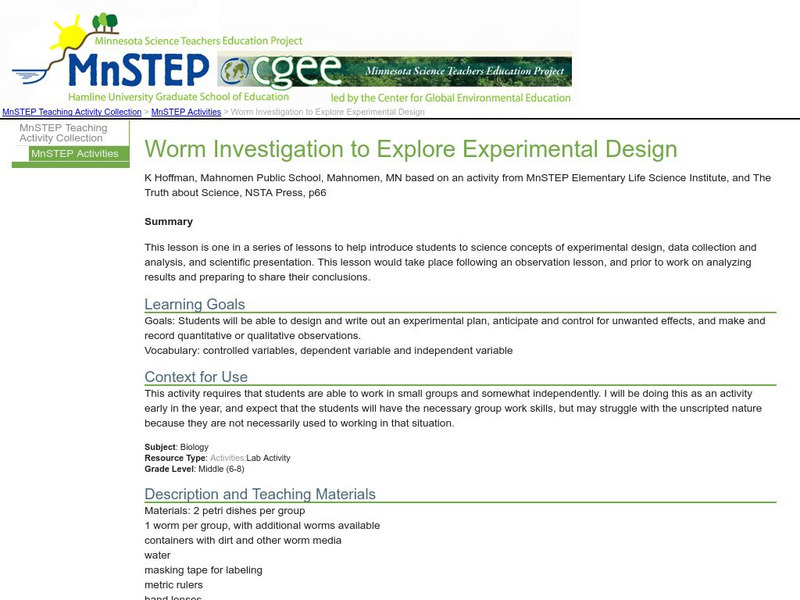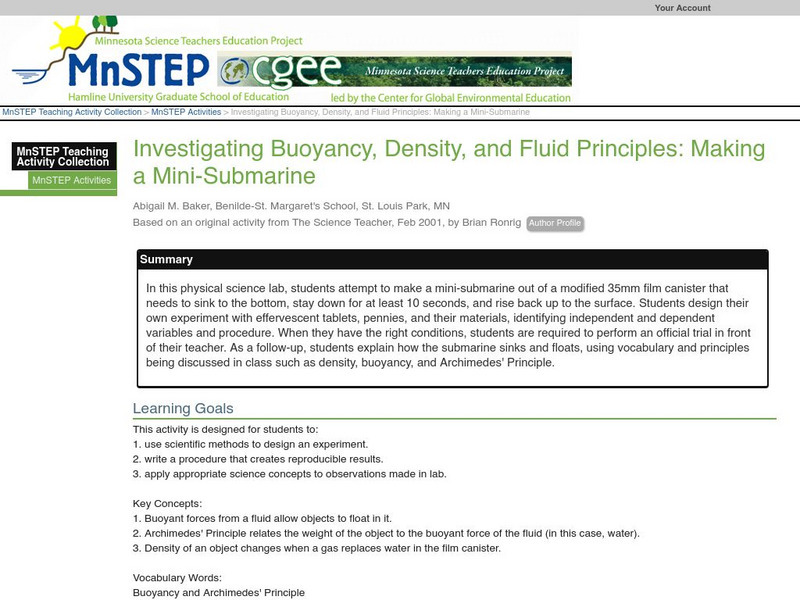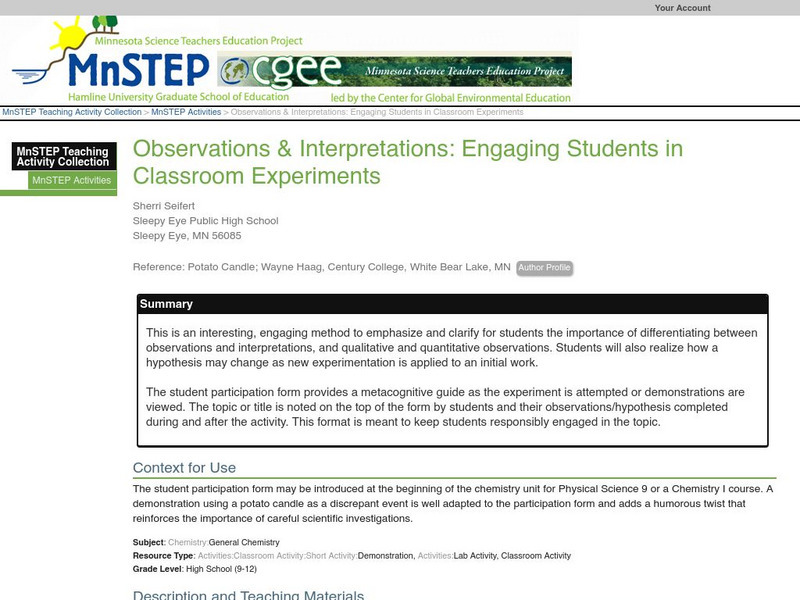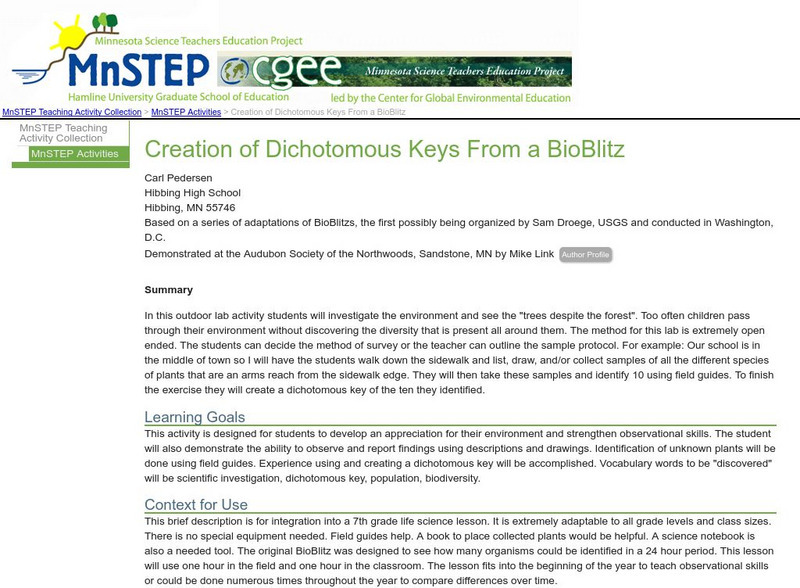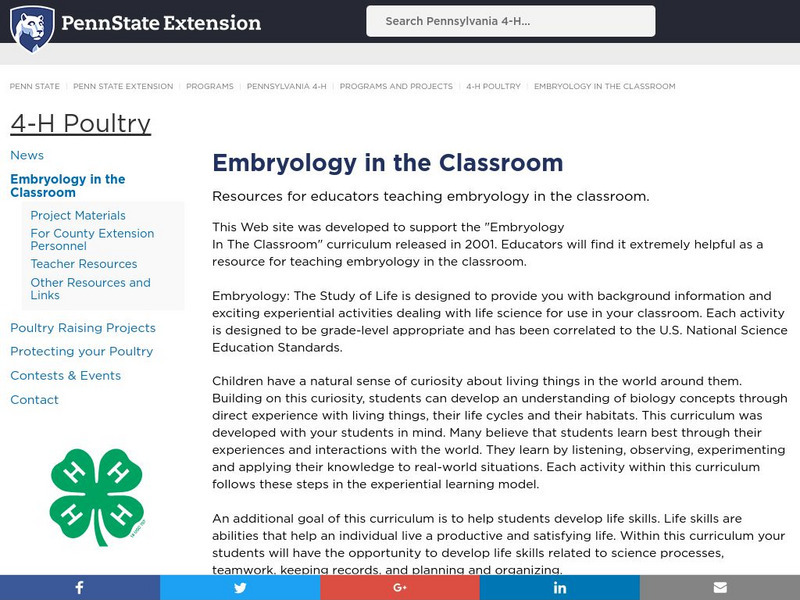Curated OER
Investigating the Earth-Moon-Sun System
Eighth graders research Native American legends involving the sun, moon, and stars and compare them to the origin of present day knowledge. They create a written report and make an oral presentation of their findings to the class.
Curated OER
Territorial Behavior in Crickets
Learners explore the behavior of crickets during courtship. They measure the number and types of interactions between household crickets. Students discriminate between quantitative and qualitative observations. They collect data to...
Curated OER
Epidemiology: Graphing and Analyzing Health Data
Students graph data on fetal and infant mortality rates collected by the Centers for Disease Control and Prevention. They identify trends in the data and propose potential causes for the trends.
Curated OER
A Living Watershed
Young scholars, through this series of lessons, use local resources, speakers, print and video materials, as well as standard text materials to study the ecosystem of the local watershed.
Curated OER
Palm use in Astronomy
Students identify and recall common constellations by using a palm pilot with astronomy software. Students will use their Palm to assist them in correctly identifying constellations using a telescope.
Curated OER
Floodplains in the field (with GIS)
Students measure a topographic and geologic cross-section across a floodplain by simple surveying and auguring techniques. They consider the spatial context of the field observations, use GPS measurements, and desktop GIS analyses.
Curated OER
Electrical Circuits And Switches
Students design and draw circuits with batteries, small light bulbs and common household conductors. They build and test the circuit then modify it so someone who couldn't use their hands could turn the circuit on and off.
Curated OER
Termite Trails
Students observe the behavior of termites and draw conclusions about their behavior. They record data as to termite behavior and recognize elements in the experimental design which must include a hypothesis.
Curated OER
Molar Ratio
Students conduct an experiment in which they react sodium bicarbonate with hydrochloric acid to determine the molar ration between the two reactants. Students must write correct formula and a balanced chemical equation and explain how...
Curated OER
How Can You Study Things You Can’t See Like: Atoms?
Students simulate how scientists studied things they can't see like atoms. In this chemistry lesson, students predict what is inside the numbered obsertainers. They design a way to investigate what's inside without opening it.
Curated OER
Testing Soils for Garden Planting
Sixth graders collect soil samples and record the location of the samples by using GPS.
Science Education Resource Center at Carleton College
Serc: Mn Step: Scientific Method Lab Using Bubble Gum
For this activity, students apply the scientific method while doing an experiment that involves the variables of bubble gum. They will investigate the size of bubbles that can be blown with two different types of bubble gum, and the...
Science Education Resource Center at Carleton College
Serc: Mystery Box Scientific Method Inquiry Lab
In this activity, students will use their senses to form hypotheses from observations. They will develop methods of collecting data, other than visual, by trying to determine the contents of several small boxes and should be able to...
Chemistry Collective
Chem Collective: Mixed Reception
Participate in the investigation of a virtual crime scene using chemistry concepts to solve a mysterious death. The 40-50 minute activity can be used as a classroom lab or as a homework assignment. Additionally, teachers may request a...
Science Education Resource Center at Carleton College
Serc: Bubbling Blobs
In this chemistry lab, students investigate how oil and water don't mix. They will work on their observation skills and their ability to follow directions to ensure they get the correct results. Students can then develop a new, testable...
Science Education Resource Center at Carleton College
Serc: Investigating Projectile Motion: Creating a Catapult
This lesson is for 9th grade physical science students. It begins with an inquiry-based lesson using a projectile motion computer simulation. It culminates with students building a catapult; applying and connecting science knowledge from...
Science Education Resource Center at Carleton College
Serc: Mn Step: Worm Investigation to Explore Experimental Design
For this lesson, middle schoolers learn about how to design an experiment, factor in other potential effects, take observations, and record their findings. The experiment is done using worms in a lab setting.
Science Education Resource Center at Carleton College
Serc: Investigating Buoyancy, Density, and Fluid Principles: Make Mini Submarine
In this lab, students will use the scientific method to design an experiment that explains how/why a submarine floats and sinks.
Science Education Resource Center at Carleton College
Serc: Observations & Interpretations: Engaging Students in Classroom Experiments
Use this method to emphasize and clarify for students the importance of differentiating between observations and interpretations, and qualitative and quantitative observations. Students will learn how a hypothesis may change as new...
Science Education Resource Center at Carleton College
Serc: Creation of Dichotomous Keys From a Bio Blitz
An outdoor lab where students investigate the environment and decide a method of survey to identify trees in their area. To finish the exercise they will create a dichotomous key of the ten they identified.
Science Education Resource Center at Carleton College
Serc: Cube Puzzle and Toilet Paper Roll Model in Teaching the Nature of Science
This lesson incorporates inexpensive materials such as carton boxes, toilet paper roll tube, strings and toothpicks. It engages students to conduct pattern observation, prediction, testing and ends up with a model construction. It also...
Pennsylvania State University
Penn State University: Embryology in the Classroom
Come and learn more about how to incorporate embryology into your classroom. This site features tons of information about the embryology of chickens.
Science and Mathematics Initiative for Learning Enhancement (SMILE)
Smile: Magnet Muscles (Lesson Plan)
A teacher lesson plan which includes a station lab; students navigate through four stations with separate activities on magnetic principles. Easily adaptable as a student project.
